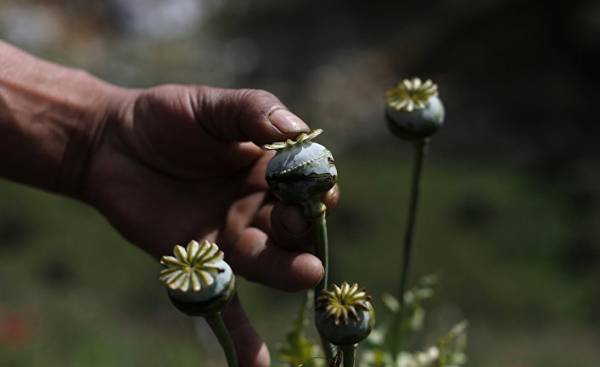
Tuesday, February 28, in his address to the members of both houses of Congress, Donald trump has promised to end “the terrible drug epidemic” in America. When Mr. trump speaks to the social ills of America, he tends to exaggerate. But as to the question about drugs, it is characteristic of the President’s grim and apocalyptic tone, apparently, has a real basis.
According to the Centers for control and prevention of diseases (Centres for Disease Control and Prevention) in 2015, more than 52 thousand Americans died as a result of a drug overdose. This means that, on average, every ten minutes from a drug kills one person. About 33 thousand of such cases of fatal overdose — that is, two-thirds of them — have for opiates, including prescription painkillers and heroin.
Although the highest rates of deaths from opiates in absolute terms, on such major cities as Chicago and Baltimore, the devastating impact of this epidemic more severe in rural regions such as Appalachia, New England and the Midwest. Many of its victims are white middle-class inhabitants of the suburbs and cities in the agricultural regions.
The opium epidemic is closely linked with the explosive growth of get prescription painkillers. In the period from 1991 to 2011, the number of discharged prescriptions opium (these drugs are sold under brands such as Vicodin, Oxycontin and Percocet), followed by the acquisition of these drugs in retail pharmacies rose from 76 million to 219 million. In addition, the increased number of doctors prescribe pain medications, as well as their effectiveness. In 2002, one of the six users were more potent than morphine. And in 2012 — already every third.
For this reason, in recent years in the United States have imposed harsh measures against use purchased prescription opiate — programs have been developed for monitoring the use of narcotic drugs and the arrests of unscrupulous doctors. Pharmaceutical companies reformulated the description of their medicines in order to make them less suitable for abuse. Unfortunately, on the background of reduced use of painkillers increased use of heroin, which is available in abundance and at cheap prices. In 2014, increased the number of Americans who used opium, and not other drugs. In 2015, the number of deaths caused by the consumption of opiates increased by 15%, and induced by heroin — 23%.
To curb the growth of overdose deaths United States increasingly rely on naloxone (naloxone), a drug that neutralizes the effects of heroin on the human brain and re – “launching” breath addict in case of overdose. Naloxone was first approved by the Office of the food and drug administration in 1971 and for several decades used the doctors and staff of the brigades of the first aid.
In recent years, some States leading the fight against the sharp increase in the number of deaths due to overdose have enacted laws which authorize its use by police officers, firefighters, and friends of addicts and their families. In a recent working paper States that such laws — they are currently registered in 45 States and Washington, D.C. — reduce the number caused by the use of opiates deaths on 9-11%.
But it is still not enough. Recently published data suggests that the situation with the opium epidemic is getting worse, and this is mainly due to the increase use of fentanyl, a synthetic opioid painkiller that is 50 to 100 times more effectively than morphine. In 2016, the number of overdose deaths increased by 26 percent in Connecticut, 35 percent in Delaware and 39% in Maine. During the first three quarters of 2016, the number of overdoses and deaths in Maine have risen dramatically and reached a monstrous 62%, forcing the Governor to officially announce the state of emergency.
The execution done by Mr. trump promises to put an end to the growth of abuse of opiates in America with each passing day it seems more and more problematic.







